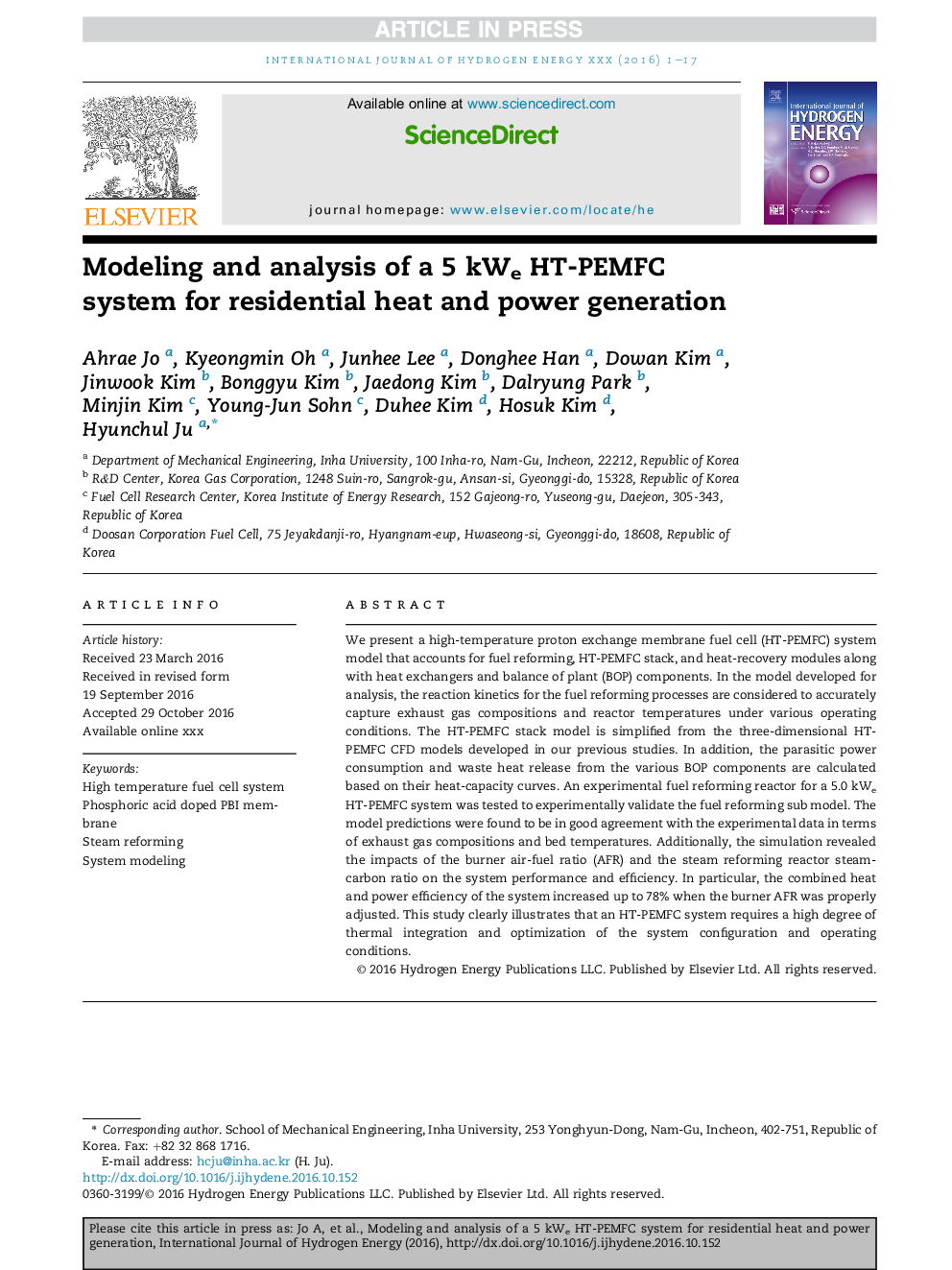| Article ID | Journal | Published Year | Pages | File Type |
|---|---|---|---|---|
| 5146982 | International Journal of Hydrogen Energy | 2017 | 17 Pages |
Abstract
We present a high-temperature proton exchange membrane fuel cell (HT-PEMFC) system model that accounts for fuel reforming, HT-PEMFC stack, and heat-recovery modules along with heat exchangers and balance of plant (BOP) components. In the model developed for analysis, the reaction kinetics for the fuel reforming processes are considered to accurately capture exhaust gas compositions and reactor temperatures under various operating conditions. The HT-PEMFC stack model is simplified from the three-dimensional HT-PEMFC CFD models developed in our previous studies. In addition, the parasitic power consumption and waste heat release from the various BOP components are calculated based on their heat-capacity curves. An experimental fuel reforming reactor for a 5.0Â kWe HT-PEMFC system was tested to experimentally validate the fuel reforming sub model. The model predictions were found to be in good agreement with the experimental data in terms of exhaust gas compositions and bed temperatures. Additionally, the simulation revealed the impacts of the burner air-fuel ratio (AFR) and the steam reforming reactor steam-carbon ratio on the system performance and efficiency. In particular, the combined heat and power efficiency of the system increased up to 78% when the burner AFR was properly adjusted. This study clearly illustrates that an HT-PEMFC system requires a high degree of thermal integration and optimization of the system configuration and operating conditions.
Keywords
Related Topics
Physical Sciences and Engineering
Chemistry
Electrochemistry
Authors
Ahrae Jo, Kyeongmin Oh, Junhee Lee, Donghee Han, Dowan Kim, Jinwook Kim, Bonggyu Kim, Jaedong Kim, Dalryung Park, Minjin Kim, Young-Jun Sohn, Duhee Kim, Hosuk Kim, Hyunchul Ju,
